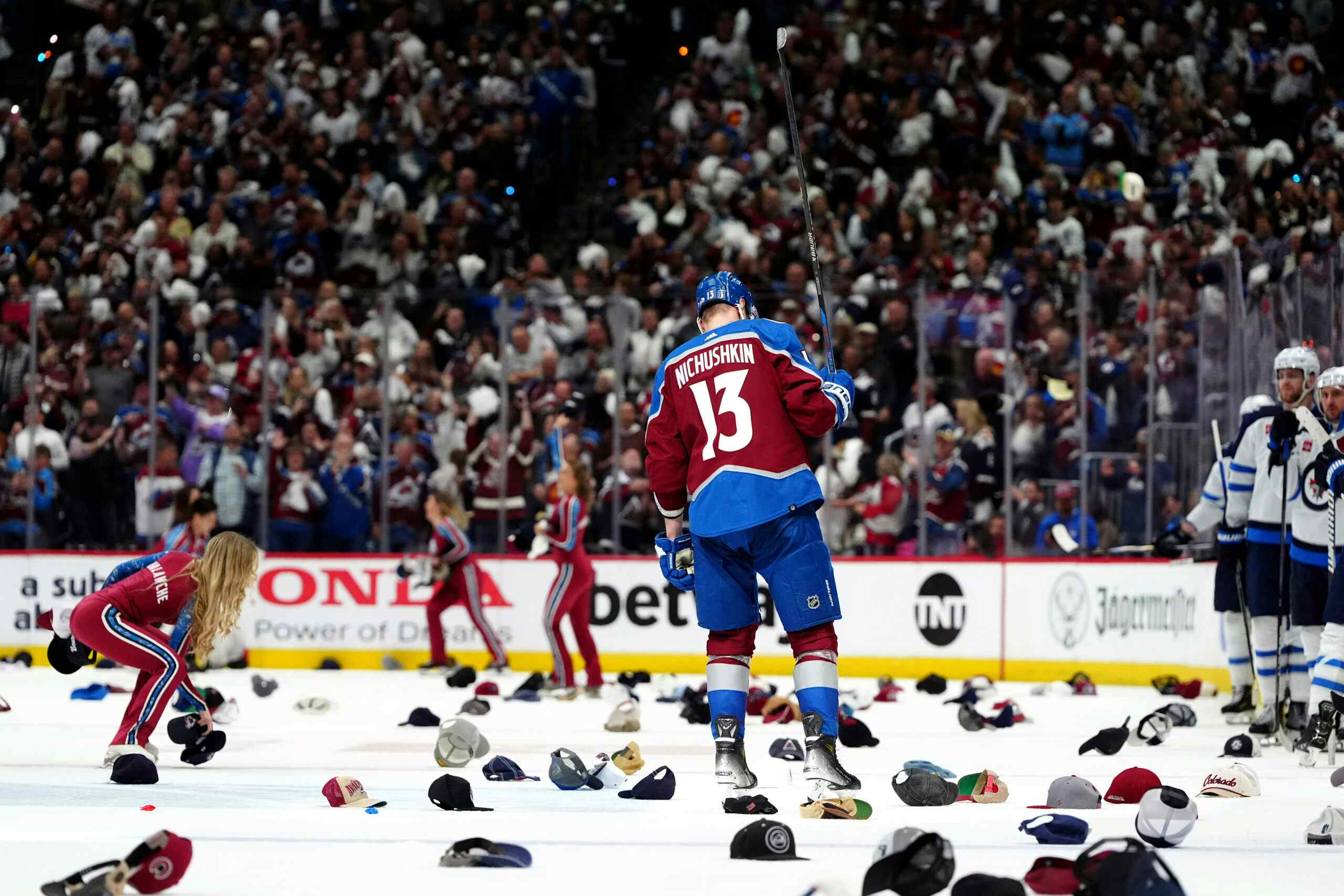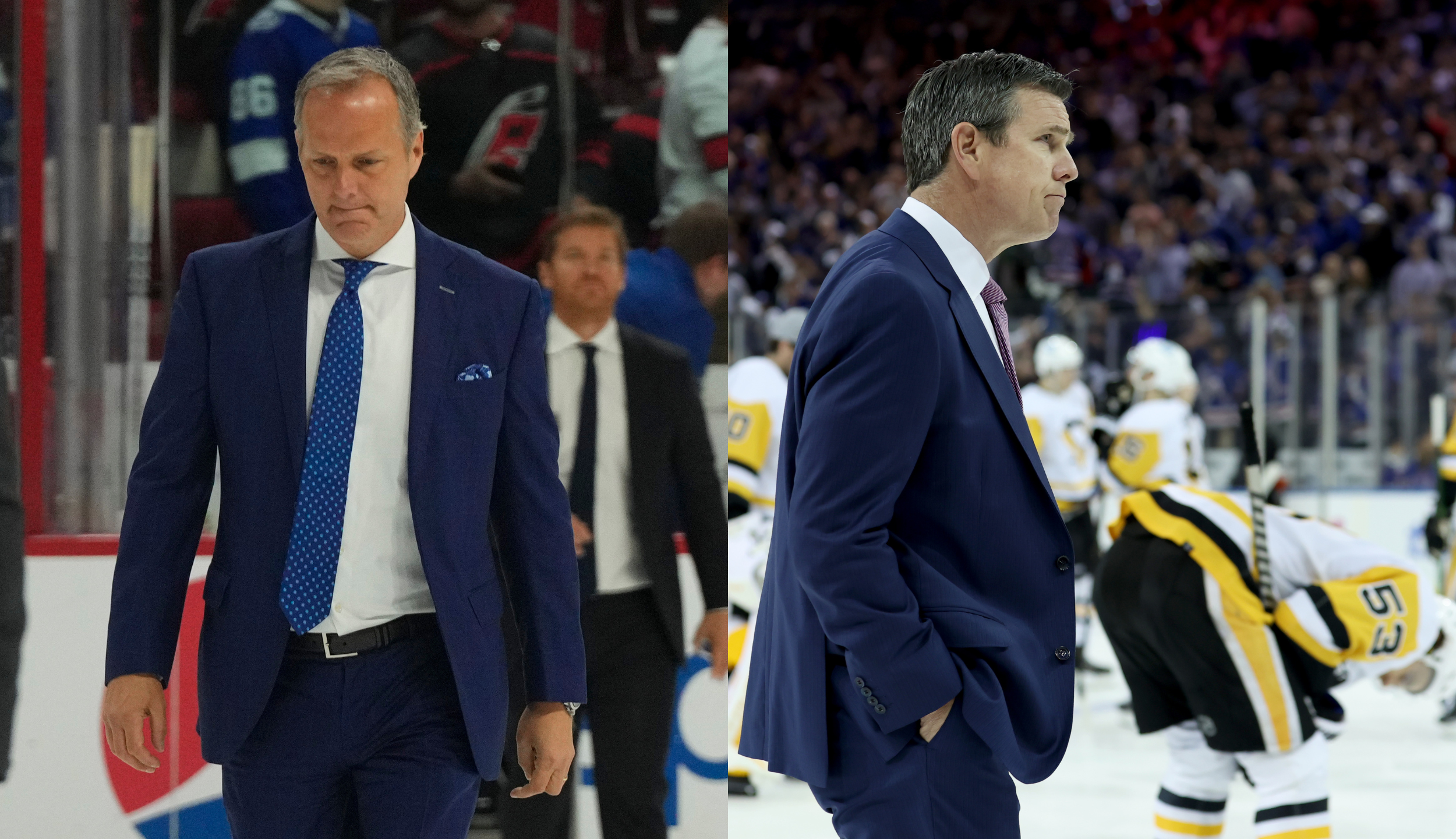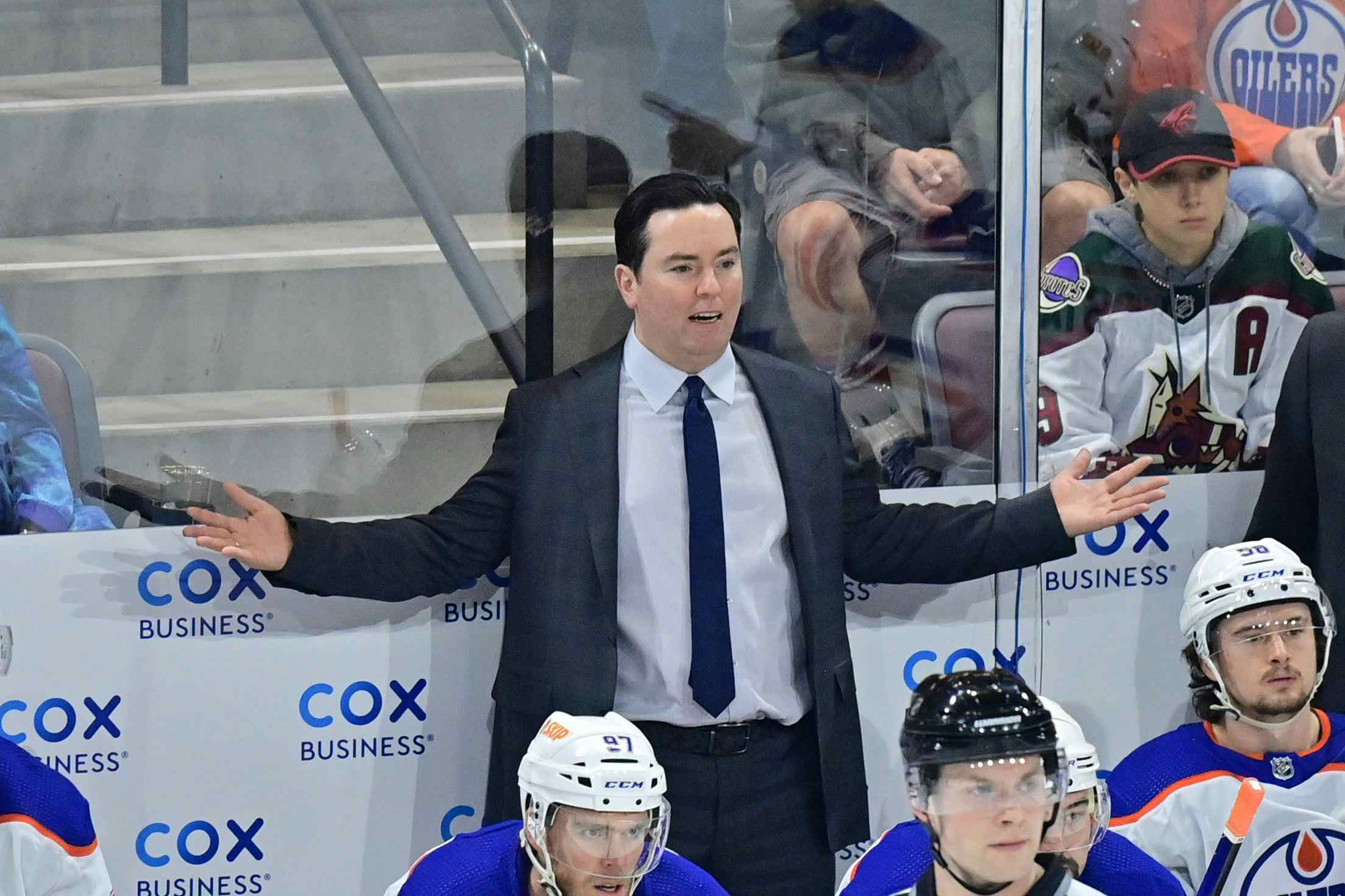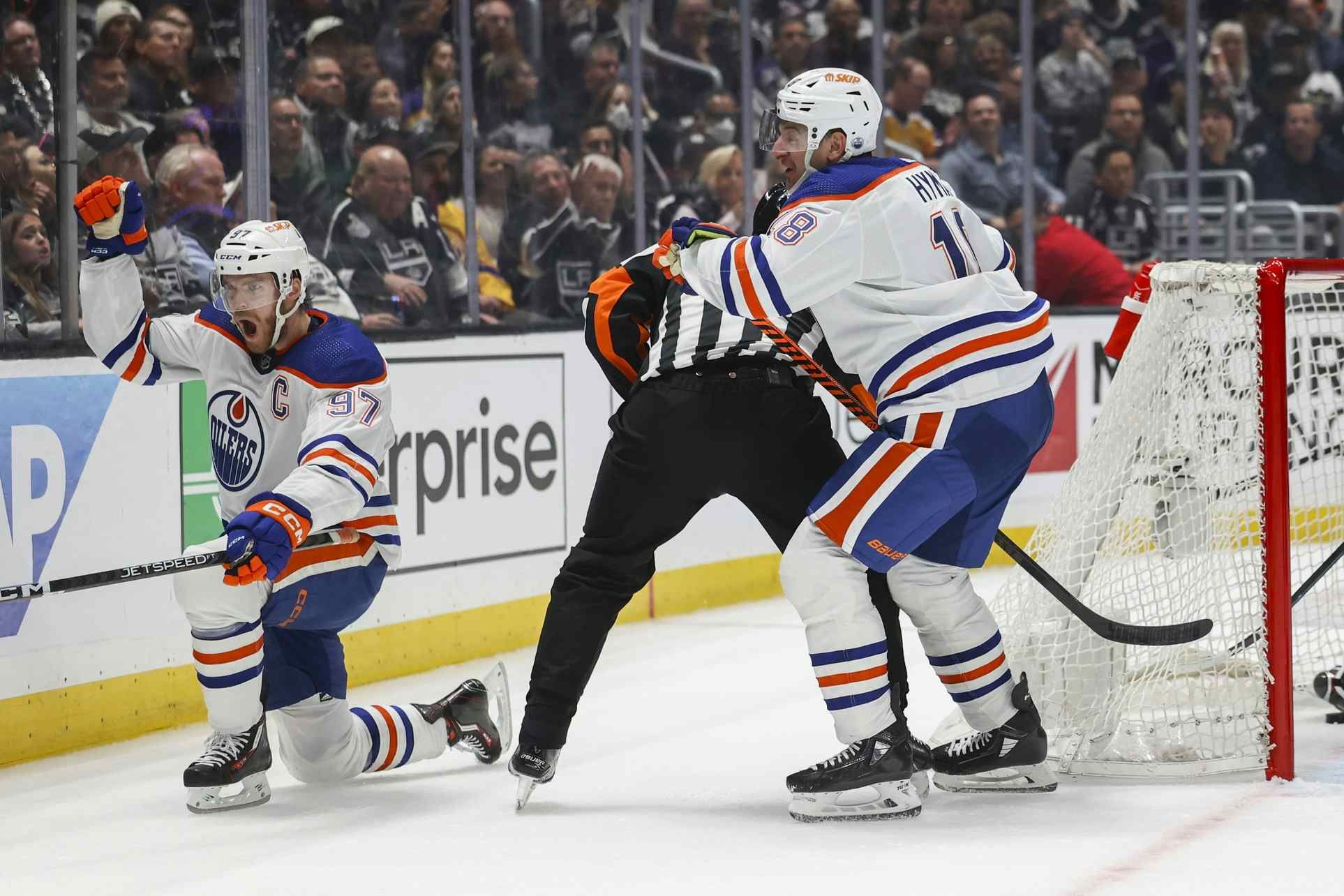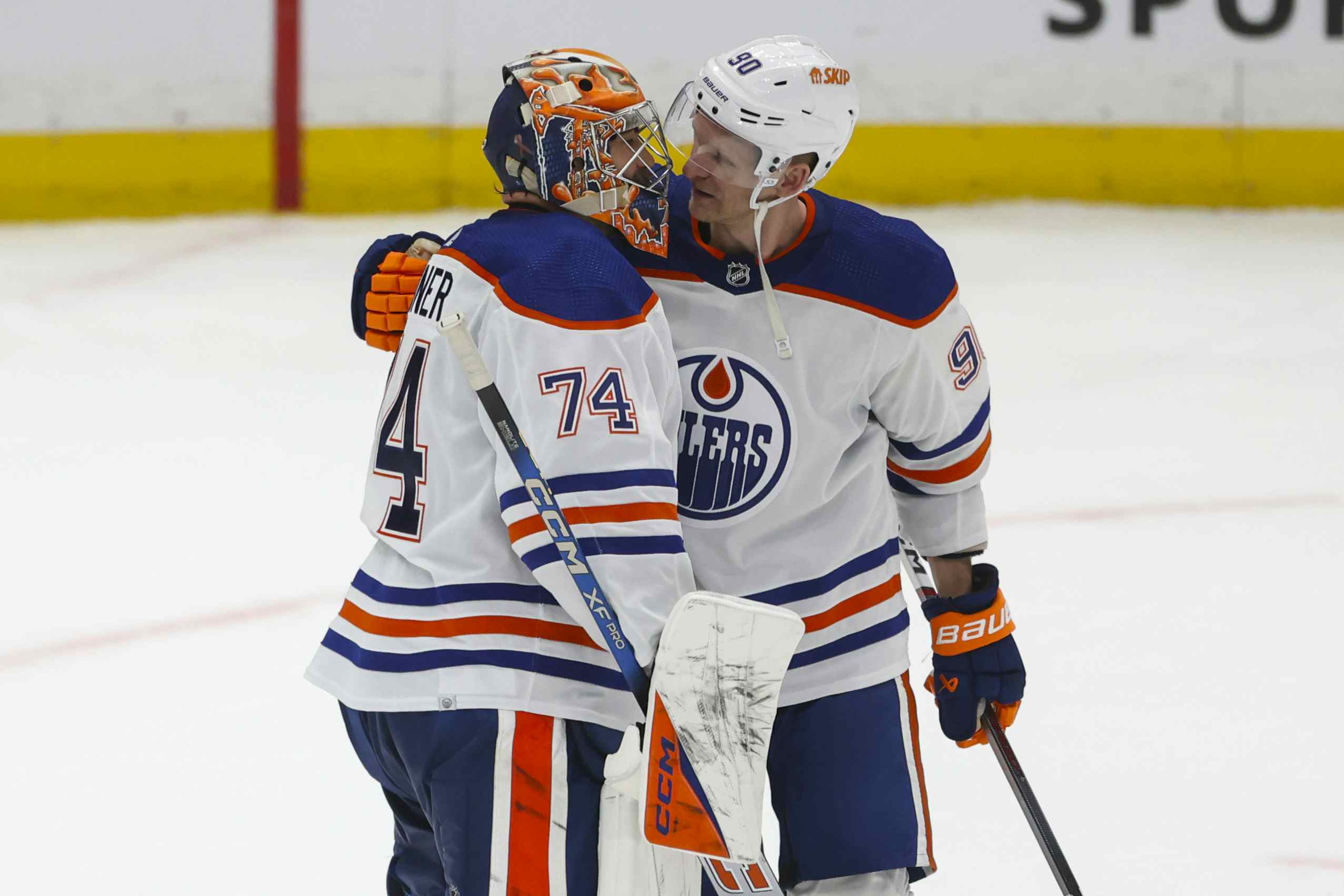Transitioning to the New Defence

The building blocks of the Oilers’ defensive future seem obvious at this point. Oscar Klefbom debuted last year, Darnell Nurse will graduate to the professional ranks this year and Edmonton paid a small fortune in futures to bring Islanders’ prospect Griffin Reinhart into the system.
One of the key subplots of this coming season will be the integration of Nurse and Reinhart into the defence and the role of Klefbom as the Oilers shift away from their disappointing veterans and toward the department of youth.
If we treat an all-veteran defence as a starting point, we end up with something that looks like this:
- Andrej Sekera – Mark Fayne
- Oscar Klefbom – Justin Schultz
- Nikita Nikitin – Eric Gryba
- Andrew Ference
At some point next season, we can be virtually certain that at least two of the players on the above depth chart will be gone, replaced by Reinhart and Nurse. The number may be more than two; Peter Chiarelli hasn’t forged a reputation as a passive general manager and Edmonton has a number of second-tier prospects who will also be pushing for employment.
If we’re projecting ahead there are probably two serious questions worth asking: When, precisely, will that transition occur and what does the long-term plan look like?
The Long-Term Plan

The second question is worth talking about first. The three young players we’ve considered are all left shot defenceman, as is Sekera (the lone veteran we can feel highly confident is part of the long-term plan). I’m reasonably confident that we’ll see Sekera move to the right side at some point and it’s also possible that Rienhart (who spent a massive chunk of last season on the starboard side) will end up there, too. My read would be that by the end of next season, the projection is for Klefbom and Sekera to be the Oilers’ top pairing, and for Nurse to play the left side on one of the remaining pairs and Reinhart to play somewhere on the other.
We can imagine the planning process then as one of determining partners for Nurse and Reinhart. Which players on that depth chart presented at the opening fit the bill?

Fayne has the advantage of a long-term contract, and probably has the best shot at sticking long-term both because of his deal and because he fits the “veteran mentor” role. It’s easy to imagine him on a pairing with Nurse, freeing up the young defenceman to be aggressive and helping to cover for his mistakes. It’s also relatively easy to imagine Fayne and Reinhart in a primarily defensive role. But his struggles with Klefbom last season are a big mark against him, as is his apparent need for a partner who can handle the puck-moving.

Schultz has points in his favour, too. He’s a right shot, a power play weapon, and young enough to fit in with the core. He had success with Klefbom and in a certain light wouldn’t be a bad partner for either of the young defencemen coming up. Nurse has a lot of the same skills as Klefbom and might work there immediately. Reinhart is a primarily defensive defenceman who might cover for some of Schultz’s defensive sins, allowing him to play run-and-gun. The problem with Schultz is that he’s already expensive, on a one-year deal, and flawed in some significant ways.
Of the remainder, it’s hard to imagine anyone sticking long-term. Under other circumstances Nikitin might be an option, but he’s making a pile of money and is on the last year of his deal; it’s hard to imagine him a) rehabilitating his reputation to the extent that the Oilers would want to keep him while simultaneously b) being willing to sign a new deal with the same team at one-third of his previous annual rate. Gryba is a third-pair defenceman (and a pending free agent) who would force Reinhart to carry the puck-moving duties there. Ference is 36 years old and didn’t perform at an acceptable NHL level a year ago.
When do the players who aren’t part of the long-term picture move on down the line?
The Transition

There are those on this site and elsewhere who feel that the changes need to take place immediately, that Nurse and Reinhart should be thrust into the fray and that the detritus in front of them should be swept away. That’s difficult to do; in some cases it’s also potentially dangerous.
There are advantages to starting a player like Nurse in the AHL to find his feet at the pro level and there are advantages to giving someone like Nikitin (who has been an effective NHL defenceman elsewhere) a look before casting him aside because of the permanence of those decisions. A decision to demote Nurse can be reversed at any time if he plays well; the decision to trade a veteran can’t be reversed if Sekera catches his foot on a rut in the ice and gets hurt two days later.
Beyond that, it’s difficult to send someone making NHL money to the minors, it’s impossible to send someone with Ference’s contract to the minors, and it’s desirable to avoid a situation where a young defenceman spends the odd game in the press box.
Training camp is going to be the first test, the first opportunity for new head coach Todd McLellan to see what he has to work with. It will be a chance for Nurse and Reinhart to show that they’re ready to make the team ahead of some of the incumbents. Unfortunately, it’s also a time when NHL teams tend to be optimistic and flush with options; it’s going to be very hard for the Oilers to dump someone like Nikitin when every team thinks it has a half-dozen guys who could play on its third pairing.
I suspect there’s room for one player to make the team out of camp. Edmonton could go to eight defencemen, scratch two of Ference/Nikitin/Gryba and let the survivor play with whichever young defender makes the cut on the third pairing. Reinhart is probably the player to make the cut. No matter how physically talented Nurse is, there are some lessons that can only be learned with experience and there’s value to giving him a month or two in the AHL to overcome the first part of that learning curve. Nurse could surprise, but I expect that the developmental benefit of minor-league time will carry the day there.
After that, it will simply be a matter of clearing away players, and that becomes easier as the year goes on. Even third-pair veteran defencemen tend to have value at the deadline, and of course there’s always the matter of injury.
The first trades of veteran defencemen in 2014-15 took place in November. Eric Brewer and Jordan Leopold were moved for picks, Sergei Gonchar and Bryan Allen for forwards and Brenden Dillon and Jason Demers for each other. History tells is that there’s going to be a window in November when NHL teams need help on the blue line, and when it comes the idea of adding even a limited veteran in the Brewer/Leopold mold (Nikitin, for example, is arguably better than both were last year) is going to appeal. If Nurse and/or Reinhart can play so well as to force a recall, Edmonton should be able to make room for them at that point.
Beyond that it’s hard to project. The moves in the back half of the year will be predicated on a number of factors, including whether the Oilers can realistically contend for a playoff spot and the performances of their defencemen in Bakersfield.
The important thing here is that there really isn’t any immediate rush. There’s a tendency to hyper-focus on training camp, but it’s misplaced when looking at pro-level, waiver-exempt prospects. Those guys can be sent down at will and recalled at any point; there’s no sense bending backwards to fit them into the team in October when it’s almost always possible a month into the season to dump a third-pairing defenceman and promote those players if their performance warrants it.
We’ll see the transition at some point next season. The exact timing will mostly depend on the performance of the players.
RECENTLY BY JONATHAN WILLIS
Recent articles from Jonathan Willis

